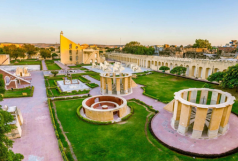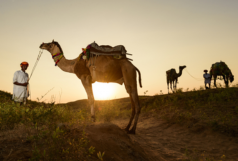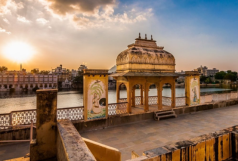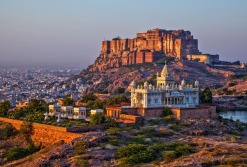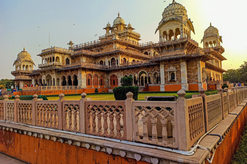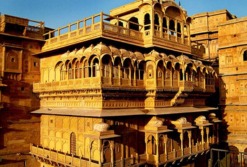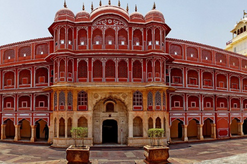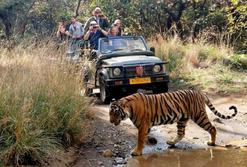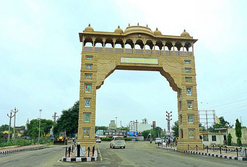Exploring Rajasthan’s Wildlife: Best National Parks & Safaris
Rajasthan, known for its regal palaces, forts, and desert landscapes, also offers some of the best wildlife experiences in India. From the majestic tigers of Ranthambore to the bird-watching haven at Keoladeo National Park, Rajasthan is a paradise for nature lovers and wildlife enthusiasts. This blog explores the best national parks and safaris in Rajasthan, highlighting their unique wildlife and the immersive safari experiences they offer.
Introduction to Rajasthan’s Wildlife
Rajasthan's diverse geography, from the arid Thar Desert to lush wetlands and dry scrublands, is home to a variety of wildlife species. The state is a haven for bird watchers, wildlife photographers, and nature enthusiasts. With numerous national parks and wildlife sanctuaries, Rajasthan offers exceptional safari experiences that take you into the heart of India’s wilderness.
Ranthambore National Park: A Tiger's Paradise
Ranthambore Tours, located in Sawai Madhopur, is one of the most famous national parks in India. Known for its population of Royal Bengal Tigers, it offers thrilling safari experiences. With its picturesque landscape, featuring lakes, ancient ruins, and a rugged fort, the park is as much a historical site as it is a wildlife haven.
- Safari Experience: Ranthambore offers both morning and afternoon safaris where visitors can witness tigers in their natural habitat. Jeep and canter safaris provide the best chance to spot these majestic creatures, along with leopards, sloth bears, and various species of deer.
- Best Time to Visit: The best time to visit Ranthambore is during the winter months, from October to March, when the weather is pleasant and wildlife sightings are abundant.
- Nearby Attractions: Apart from tiger safaris, you can explore the Ranthambore Fort, a UNESCO World Heritage Site, and enjoy a visit to the nearby Padmavat Lake.
Keoladeo National Park: A Birdwatcher's Dream
Keoladeo National Park, also known as Bharatpur Bird Sanctuary, is a UNESCO World Heritage Site and one of the finest bird-watching destinations in India. Located in Bharatpur, this park is home to over 300 species of birds, including migratory birds from Central Asia, Siberia, and Europe.
- Safari Experience: You can explore the park on foot, by cycle-rickshaw, or on a boat ride, offering a unique experience to get up close to the diverse birdlife. Birds like Siberian cranes, painted storks, and eagles can be seen in abundance.
- Best Time to Visit: The best time for bird watching is from October to February, when migratory birds flock to the park.
- Nearby Attractions: Visitors can also visit the nearby Lohagarh Fort and explore the local villages around Bharatpur for a deeper cultural experience.
Sariska Tiger Reserve: A Hidden Gem
Sariska Tiger Reserve, located in the Alwar district of Rajasthan, is one of the best places to spot tigers in the wild. Apart from tigers, Sariska is home to a rich variety of wildlife, including leopards, wild boar, and a range of bird species. The reserve is set amidst the Aravalli Range, adding to its scenic beauty.
- Safari Experience: Sariska offers jeep safaris that give you the chance to spot tigers, along with other wildlife such as sambar, nilgai, and langurs. The park’s rich flora and fauna make for an unforgettable safari.
- Best Time to Visit: The park is open year-round, but the best time to visit is from November to March when the wildlife is most visible.
- Nearby Attractions: Don't miss a visit to the historic Alwar Fort and the nearby Neelkanth Temple while in the area.
Desert National Park: The Wild Side of the Thar
Located in the heart of the Thar Desert, Desert National Park is a unique destination for wildlife lovers. The park is home to a variety of desert species, including the critically endangered Great Indian Bustard. The park’s desert landscape offers a surreal experience, with vast stretches of sand dunes and salt lakes.
- Safari Experience: Explore the park on a jeep safari to spot rare desert wildlife such as the chinkara (Indian gazelle), desert fox, and the Indian wolf. The Great Indian Bustard, one of the heaviest flying birds, is a major highlight of this park.
- Best Time to Visit: The best time to visit Desert National Park is from October to March, when the desert weather is more hospitable.
- Nearby Attractions: While visiting the park, you can also check out the historic town of Jaisalmer, known for its Golden Fort and beautiful Havelis.
Other Notable Wildlife Destinations in Rajasthan
Rajasthan is home to several other national parks and wildlife sanctuaries, each offering unique safari experiences and wildlife encounters:
- Kumbhalgarh Wildlife Sanctuary: Known for its rich flora and fauna, this sanctuary is famous for its unique landscapes and wildlife like leopards, hyenas, and antelopes.
- Ranthambore Fort and Its Surroundings: A UNESCO World Heritage Site that offers a combination of historic forts and wildlife.
- Mukundra Hills Tiger Reserve: A relatively new reserve offering jeep safaris and opportunities to spot tigers and other wildlife.
Wildlife Conservation Efforts in Rajasthan
Rajasthan's wildlife conservation efforts are commendable. The state has set up several reserves, national parks, and sanctuaries to protect its diverse flora and fauna. With ongoing anti-poaching measures, habitat preservation programs, and community involvement, Rajasthan plays an essential role in India's wildlife conservation.
- Protection of Endangered Species: The government of Rajasthan has taken significant steps to protect endangered species, particularly tigers, through the establishment of tiger reserves and strict anti-poaching laws.
- Community Engagement: Local communities are actively involved in wildlife protection and tourism, ensuring that conservation efforts benefit both the ecosystem and the people living nearby.
Tips for Wildlife Safaris in Rajasthan
- Choose the Right Time: Plan your visit during the winter months (October to March) to enjoy the best safari experience.
- Be Prepared: Carry binoculars, a camera with a zoom lens, and wear light, comfortable clothing for safaris.
- Respect the Wildlife: Maintain a safe distance from animals, avoid making noise, and follow the guidelines set by the park authorities.
Conclusion
Rajasthan’s national parks and wildlife sanctuaries offer a perfect blend of adventure, nature, and beauty. From the elusive tigers of Ranthambore Tours to the serene birdlife of Keoladeo, these parks provide one-of-a-kind safari experiences. Whether you are a wildlife enthusiast or a first-time traveler, Rajasthan is a must-visit destination for a wildlife safari that will stay with you forever. Book your next adventure with Sightseeing Cab in Jaipur and explore the wild side of Rajasthan in comfort and style.



